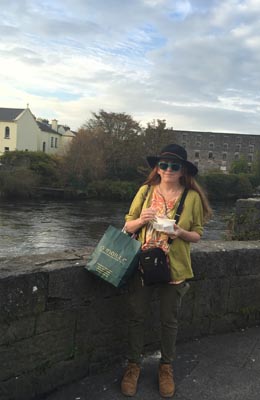Home › Forum topic › Rare Plant Reintroduction › Are there examples of reintroductions with fungi or mycorrhizae?
-
AuthorPosts
-
April 25, 2019 at 1:31 pm #348
 Joyce MaschinskiCPC Conservation Officer
Joyce MaschinskiCPC Conservation Officer
I’m especially interested in experimental reintroductions particularly. Any examples are welcome.
July 11, 2019 at 1:28 pm #248 Juianne McGuinnessCPC Conservation Officer
Juianne McGuinnessCPC Conservation Officer
Hi Joyce – I asked Dennis Whigham to address this query… with orchids, this approach has been tried in at least a few instances, and is still in the early stages of development (much work remains to be done to identify the vast majority of fungal endophytes which associated with specific species of orchids). So, the “short answer” is that there are not many North American examples to draw upon, and just a few examples in Australia, South China, and Cuba – most studies at this point have been focused on isolation and identification of fungal endophytes (including from reintroduced populations), versus actually utilizing fungal inoculation for reintroduction experiments.
That said, NAOCC collaborator Dr. Larry Zettler at Illinois College (Orchid Recovery Program) has probably done the most work in this area with orchids in the US (and in conjunction with colleagues in Cuba) – we include some of his articles, below. He has used a few different techniques to grow orchids with their known, associated fungi, as well as with fungal endophytes isolated from another species. He has grown specific fungi and inoculated the soils (or burlap for ephiphytes) at orchid sites. One of NAOCC’s current projects is a collaboration with Dr. Zettler to culture fungi from orchids native to Palau, and conduct germination experiments with a goal of growing plants with the appropriate fungi and returning those symbiotically-propagated plants to Palau for restoration.
In other small-scale projects, Smithsonian (NAOCC) staff (Dennis Whigham, Melissa McCormick) have introduced fungi into soils along with orchids experimentally. We are currently working with Peter Zale at Longwood Gardens to run trials and develop techniques to propagate several species of native orchids using their mycorrhizal fungi (current experiments are in pots but other in-ground trials are planned).
Also, NAOCC collaborator Jason Downing at Fairchild Tropical Botanic Garden is actively growing native orchids (e.g., Million Orchid Project) using symbiotic techniques – isolating and culturing mycorrhizal fungi for propagation and restoration efforts. Together, as part of our “Orchids-in-the-Classroom” project, we have planted out orchids at site in Miami that students grew with fungi; although a limited example, it has been happening on a small scale.
While the Smithsonian (NAOCC) now has the largest collection of orchid mycorrhizal fungi in the world, a large majority of those isolates have turned out to be “new to science”, so there is a long way to go before we can collaboratively develop propagation and restoration protocols (i.e. utilizing fungi) for most of the native orchids of the U.S. and Canada.
Here are a few references that touch on the subject (relating specifically to orchids):
Stewart, S.L., Zettler, L.W., Minso, J., Brown, P.M. (2003) Symbiotic germination and reintroduction of Spiranthes brevilabris Lindley, an endangered orchid native to Florida. Selbyana 24(1). 64–70.
Mújica, E.B., Mably, J.J., Skarha, S.M., Corey, L.L., Richardson, L.W., Danaher, M.W., González, E.H., Zettler, L.W. (2018). A comparision of ghost orchid (Dendrophylax lindenii) habitats in Florida and Cuba, with particular reference to seedling recruitment and mycorrhizal fungi, Botanical Journal of the Linnean Society. 186(4). 572–586, https://doi.org/10.1093/botlinnean/box106
Zettler, L. W., Poulter, S. B., McDonald, K. I., and Stewart, S. L. (2007). Conservation-driven propagation of an epiphytic orchid (Epidendrum nocturnum) with a mycorrhizal fungus. HortScience 42(1). 135–139. https://doi.org/10.21273/HORTSCI.42.1.135
Batty A. L., Brundrett M. C., Dixon K. W., Sivasithamparam K. (2006) In situ symbiotic seed germination and propagation of terrestrial orchid seedlings for establishment at field sites. Australian Journal of Botany 54. 375-381. https://doi.org/10.1071/BT04024
Shao, S-C., Burgess, K. S., Cruse-Sanders, J. M., Liu, Q., Fan, X-L., Huang, H., Gao, J-Y. (2017). Using in situ symbiotic seed germination to restore over-collected medicinal orchids in Southwest China. Frontiers in Plant Science. 8. 888. https://www.frontiersin.org/article/10.3389/fpls.2017.00888. DOI=10.3389/fpls.2017.00888
Takahashi, K., Ishikawa, H., Ogino, T., Hatana, T., and Ogiwara, I. (2008). Time of seed germination, infection of orchid mycorrhizal fungi, and reintroduction of protocorms inoculated with orchid mycorrhizal fungi and covered with gel to a habitat in Habenaria radiata (Thunb.) k. Spreng. Horticultural Research. (Japan). 7. 27–31. doi: 10.2503/hrj.7.27
-
AuthorPosts
- This topic has 1 reply, 2 voices, and was last updated 6 years, 1 month ago by
 Juianne McGuinness.
Juianne McGuinness.
- You must be logged in to reply to this topic.